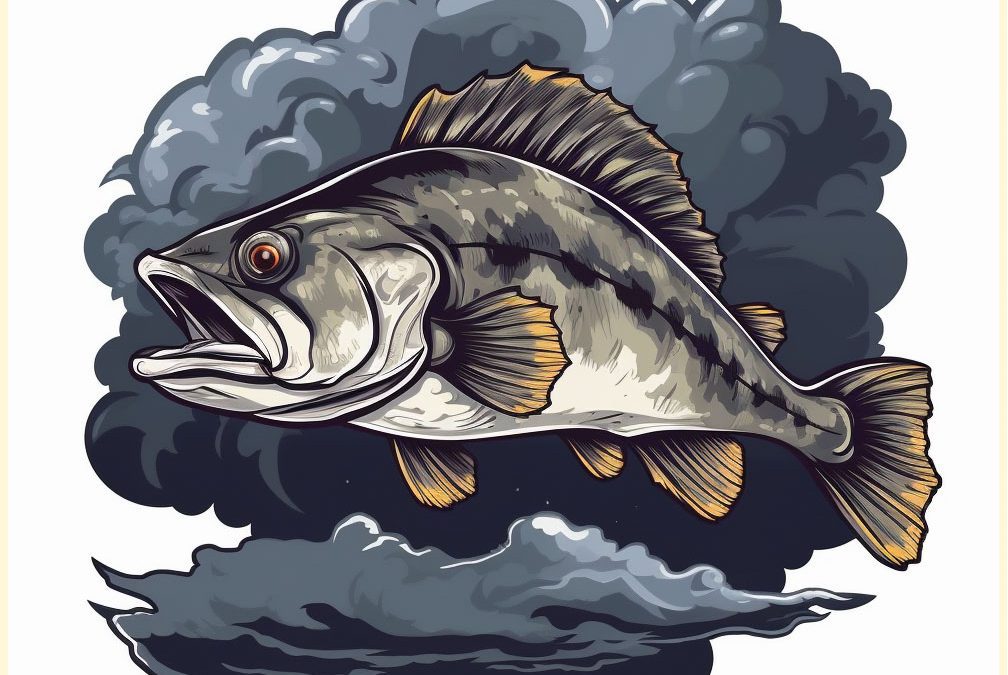For many anglers, fishing in cloudy conditions may seem like a recipe for disaster. After all, when the sun isn’t shining and the water isn’t clear, how are you supposed to find and catch fish? But the truth is that cloudy days can actually be great for catching bass if you know how to approach these conditions. In this article, we’ll take a closer look at why cloudy days can be good for fishing, how they impact bass behavior, and what you can do to increase your chances of catching bass when it’s cloudy.
Understanding How Clouds Affect Bass Fishing
Before we dive into tips and techniques for catching bass when it’s cloudy, it’s important to understand how clouds impact water temperature and visibility, and how those factors can affect bass behavior.
When it’s cloudy outside, less sunlight reaches the water, which can cause the water temperature to drop. Cooler water can slow down the metabolism of bass and other fish, making them less active and more sluggish. Additionally, cooler water can also cause baitfish to slow down, which in turn can affect how bass feed.
On the other hand, cloudy days can also reduce visibility in the water. When the sun is shining and the water is clear, bass can see farther and are more likely to venture out into open water. But when it’s cloudy and the water is murky, bass may feel more comfortable sticking close to cover, where they can hide and wait for prey to pass by.
All of these factors can impact your ability to catch bass on cloudy days, but they can also be used to your advantage if you know how to adapt your fishing technique.
Adjusting Your Fishing Technique on Cloudy Days
So what can you do to catch bass when it’s cloudy? The first step is to adjust your fishing technique to the conditions. Here are a few tips:
- Use slower, more subtle lure movements to mimic the sluggishness of baitfish in cooler water.
When the water temperature drops due to cloudy conditions, bass are more likely to be feeding on slower-moving prey. This means you’ll want to slow down your retrieve and focus on making subtle movements with your lure that mimic the movement of baitfish in cooler water. For example, you might try using a soft plastic bait with a slow, gentle action, or a jig that you can twitch slowly to give it a more natural look.
- Target deeper structure or weedlines where bass may be holding due to decreased visibility.
When the water is darker due to cloudy weather, bass are more likely to stay close to cover where they can hide and wait for prey to pass by. This means you’ll want to focus your efforts on fishing weedlines, drop-offs, and other structures where bass may be holding. Try using a Carolina rig or a Texas rig to present your bait to bass that are hiding in cover.
- Use brighter colored lures to make them more visible in cloudy water.
When the water is murky, it can be harder for bass to spot your lure. To counteract this, try using brighter colored lures that will be more visible in cloudy water. For example, you might try using a bright orange or pink soft plastic bait to make it stand out.
Tips for Catching Bass When It’s Cloudy
In addition to adjusting your fishing technique, there are a few other tips and tricks you can use to increase your chances of catching bass on cloudy days.
- Use live bait like worms or minnows.
When the water temperature drops due to cloudy weather, bass are more likely to be feeding on slow-moving prey like worms or minnows. If you’re having trouble getting bass to bite on lures, try switching to live bait and see if that makes a difference.
- Fish in areas with a lot of cover, such as fallen trees or submerged logs.
When the water is murky, bass are more likely to stick close to cover where they can hide and wait for prey to pass by. Look for areas with a lot of cover, like fallen trees, submerged logs, or weed beds, and focus your efforts there. Fishing in these areas can also help you avoid getting snagged on underwater obstacles.
- Pay attention to changes in weather patterns and fishing accordingly.
Finally, it’s important to pay attention to changes in weather patterns and adjust your fishing strategy accordingly. If the weather has been cloudy for several days in a row, bass may have become accustomed to the cooler water temperature and adjusted their feeding habits accordingly. But if there’s a sudden break in the weather and the sun comes out, you might find that the bass are suddenly more active and more likely to venture out into open water.
Conclusion
In conclusion, fishing for bass on cloudy days can be challenging, but it can also be incredibly rewarding if you know what you’re doing. By understanding how clouds impact water temperature and visibility, adjusting your fishing technique, and taking advantage of live bait and cover, you can increase your chances of catching bass when it’s cloudy. Remember to be patient, experiment with different lures and techniques, and pay attention to changes in weather patterns to improve your chances of success. With a little practice and perseverance, you may find that cloudy days are some of the best days for catching bass.

